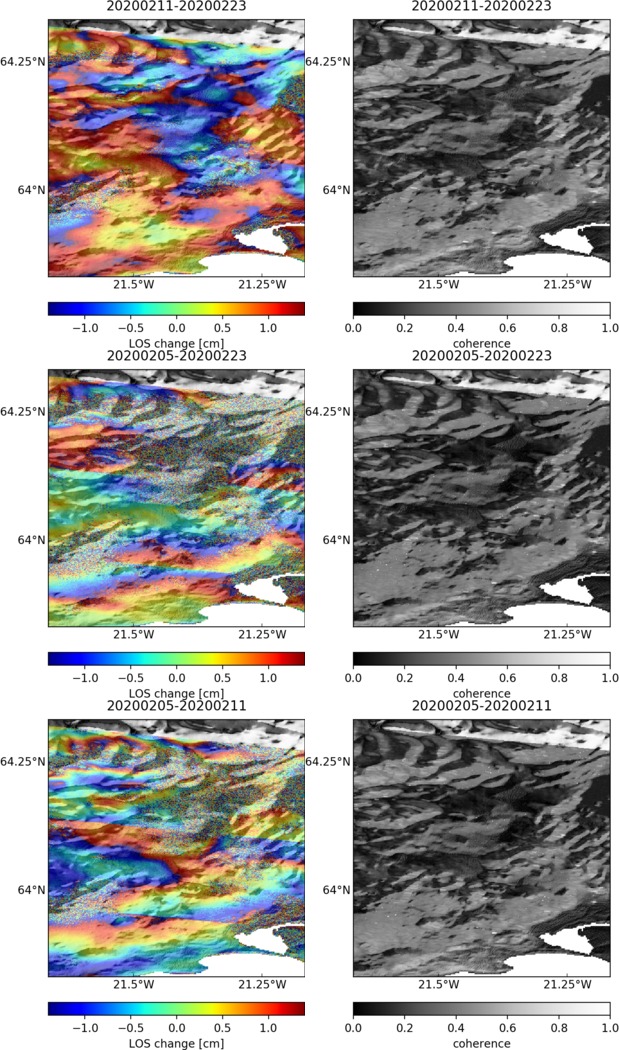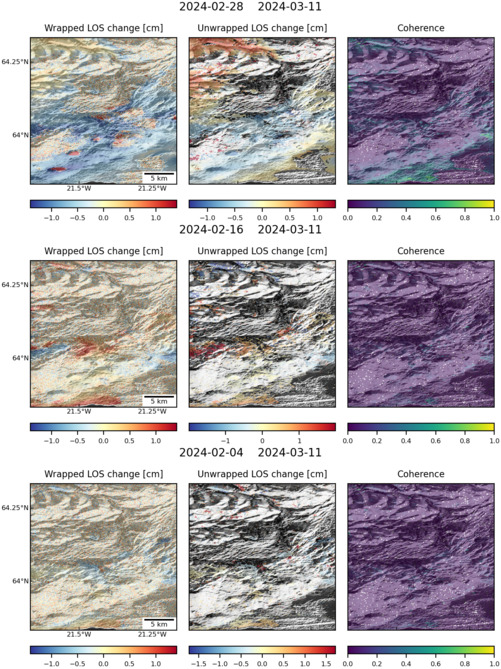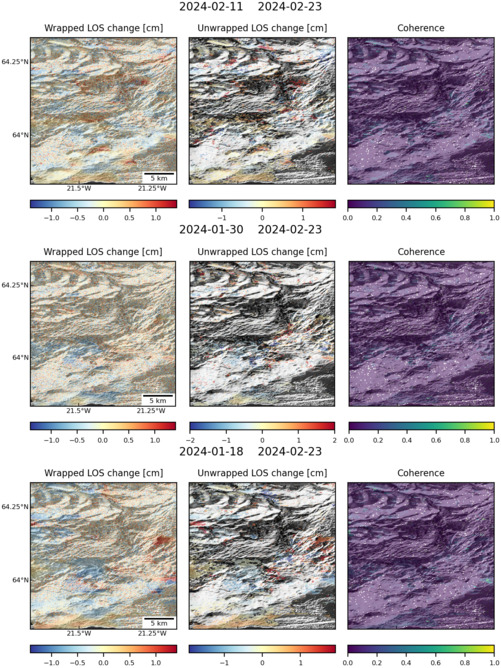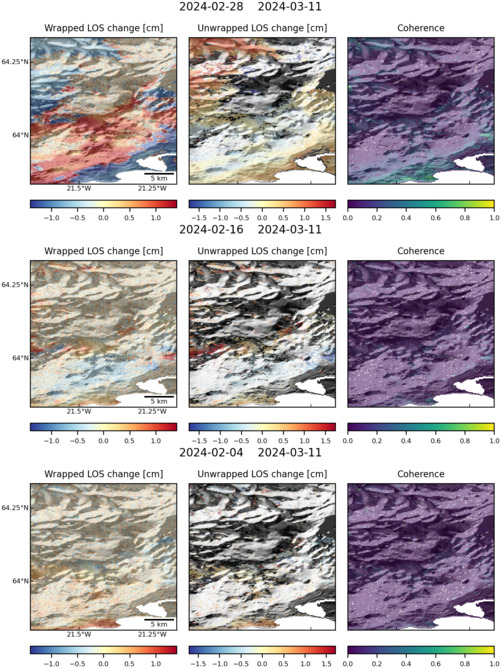Observations of Deformation
| Volcano number: | 371050 |
|---|---|
| Region: | Iceland and Arctic Ocean |
| Country: | Iceland |
| Geodetic measurements? | Yes |
| Deformation observation? | Yes |
| Measurement method(s): | InSAR, GPS - continuous |
| Duration of observation: | Continuous |
| Inferred cause(s) of deformation: | Magmatic, Faulting/tectonics |
| Characteristics of deformation: | Summary based on Clifton et al. (2002): |
| Reference(s): | Smithsonian Institution Global Volcanism Program http://www.volcano.si.edu/volcano.cfm?vn=371050 |
| Clifton, A., F. Sigmundsson, K. Feigl, G. Gunnarsson, Th. Árnadóttir, Surface effects of faulting and deformation resulting from magma accumulation at the Hengill triple junction, SW Iceland, 1994-1998, J. Volc. Geotherm. Res., 115, 233-255, 2002. | |
| Sturkell, E., Einarsson, P., Sigmundsson, F., Geirsson, H., Olafsson, H., Pedersen, R., ... & Stefánsson, R. (2006). Volcano geodesy and magma dynamics in Iceland. Journal of Volcanology and Geothermal Research, 150(1), 14-34. | |
| The Icelandic Meteorological Office (IMO) | |
| Location: | 64.08, -21.32 |
| REST API endpoint (JSON): | https://comet.nerc.ac.uk/wp-json/volcanodb/v1/volcano/5395 |
Latest Sentinel-1 Data

Size: 619px x 1050px (232.48 KB)

Size: 501px x 669px (175.49 KB)

Size: 501px x 669px (172.72 KB)

Size: 501px x 669px (178.29 KB)

Size: 501px x 668px (178.19 KB)

Size: 619px x 1050px (228.44 KB)

Size: 501px x 669px (170.49 KB)
